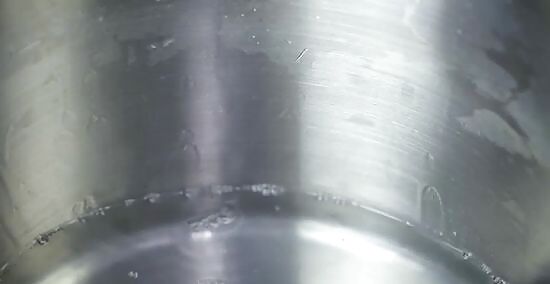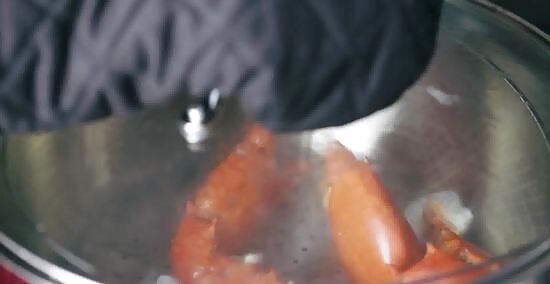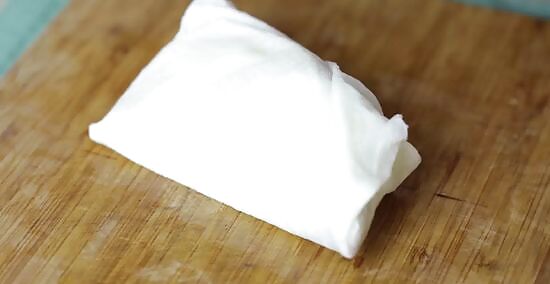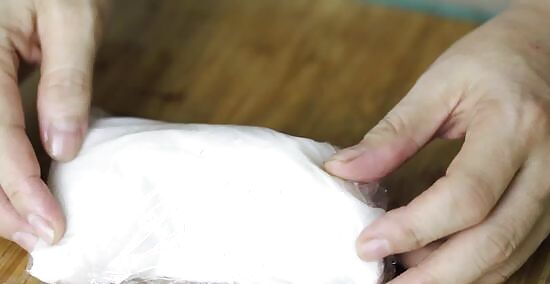
views
Traditional Steamed Crab Legs

Thaw the crab legs. The best way to thaw frozen crab legs is by placing them in the refrigerator overnight. Place the crab legs and claws in a container as they thaw so that they will not drip water inside the refrigerator as the ice melts. If you do not have enough time to thaw the crab legs in the refrigerator, you can thaw them by rinsing them under cold, running water for a few minutes. At the very, make sure that the ice has melted before cooking them.

Bring 4 cups (1 L) of water to a boil in a large stockpot. Insert a steamer basket inside the pot, making sure that the bottom of the basket does not come into direct contact with the water. You only need about 1 to 3 inches (2.5 to 7.6 cm) of water in the stockpot. The water level should be low enough to avoid hitting the bottom of the steamer basket. If you do not have a steamer basket, a metal colander can be used, instead. Just make sure that the colander can rest on the lip of the stockpot without falling into it and that the lid of the pot can still fit on top. Additionally, the colander should never dip into the water inside the stockpot.

Place the crab legs inside the steamer basket. Arrange the crab legs and claws in a single layer and cover the stockpot. By keeping the crab legs and claws in a single layer, you ensure even cooking. If they need to be stacked slightly, however, they should still cook through. A tight cover is essential. If you do not cover the stockpot, you will have no way of trapping the steam inside, and the crab legs will not heat through correctly.

Steam until heated through. This can take anywhere from 5 to 7 minutes depending on the size of the crab legs and how thawed they are before you steam them. Once the crab legs become fragrant, they are likely done or very close to being done. If you want to check more thoroughly, carefully pick one up with tongs and touch the meaty part with the tip of your pinky finger.

Serve hot. Steamed crab legs should be enjoyed immediately. They are often served with clarified butter, but melted butter, salt, and lemon wedges are also good accompaniments. Be careful when removing the crab legs from the steamer. Lift the lid away from your face so that you do not accidentally burn yourself on the hot steam as it bursts out. Steamed crab legs and claws have softened shells, so a crab cracker should not be used to get the meat out. Instead, use sharp kitchen scissors or shears to cut the crab apart at down the center. If serving these to guests, you can completely remove the shell or simply cut a small slit into each one to get the process started. In case you find the crab legs or claws too hot to handle with your bare hands, or if the shell is spiny and hard to hold, you could wear a glove while working with it.
Stovetop Steaming without a Steamer

Thaw the crab legs. For best results, place the frozen crab legs in a shallow container and thaw them in the refrigerator overnight. If you do not keep the crab legs in a container as they thaw, the melting ice could leave a big puddle of water in your refrigerator by morning. Note that crab legs can be thawed with cold water if you are short on time. Run each leg and claw under cold, running water for several minutes. Do not attempt to steam the crab legs until the ice has melted off, at the very least.

Add water, lemon wedges, and salt to a large skillet. Fill the bottom of the skillet with no more than 1 inch (2.5 cm) of water. Add wedges from 1 lemon along with 1 tsp (5 ml) or so of salt. Bring to a simmer over medium-high heat. You only need enough water to create steam. If you add too much water, you will end up boiling the crab legs instead of steaming them. The lemon and salt are only optional. If you do add the salt, let the contents of the skillet simmer for 2 to 3 minutes, giving the salt ample time to dissolve, before adding the crab legs and/or claws.

Add the crab legs and cook. Arrange the crab legs and claws in the skillet in a single layer and cover tightly with a lid. Steam for 5 to 7 minutes, or until heated through. For a tighter seal, consider covering the skillet with a sheet of aluminum foil as well as or instead of the lid. Place the foil on carefully, however, so that you do not burn your fingertips on the sides of the hot pan. One good indication that the crab legs are done is when they become notably fragrant. If you want to double-check on whether or not the crab legs are done, remove the cover of the pan and pick the thickest crab leg up with a set of tongs. Lightly touch the meaty part with the tip of your pinky finger to see if it is warm.

Serve hot. Enjoy the crab legs as soon as you finish steaming them. Serve them with melted or clarified butter on the side. Be careful when removing the crab legs from the skillet. Lift the lid away from your face so that you do not accidentally burn yourself on the hot steam as it bursts out. Steamed crab legs and claws have softened shells, so a crab cracker will likely crush the shell into the meat instead of cracking the shell open. Dig the meat out by using sharp kitchen scissors or shears to cut the crab apart at down the center. If serving these to guests, you can remove the shell entirely or simply cut a small slit into each one to get the process started. The choice is yours. If the crab legs too hot to handle with your bare hands, or if the shell is spiny and difficult to hold, wear a glove while working with it.
Microwave Steamed Crab Legs

Thaw the crab legs. Place the crab legs and claws in a shallow container and let them sit in your refrigerator overnight until thawed. By placing the crab legs and claws in a container, you prevent the ice from melting into water all over your refrigerator shelves. If you are short on time, thaw the crab legs and claws by rinsing them under cold, running water for several minutes. You can rinse them until the entire section comes to room temperature, but at the very least, you should rinse them until the ice melts off.

Cut the claws and legs at their joints. Use sharp kitchen shears or a heavy knife to cut the claws and legs at their joints. Otherwise, you may not be able to fit them into your microwave. If your microwave is large enough, however, you do not need to separate the claws and legs at their joints.

Wrap three pieces in damp paper towel. Moisten several sheets of clean paper towel with water, wringing them out gently to remove any excess. Securely wrap these damp paper towels around three sections at a time until all the sections are wrapped. You only need enough water in the paper towels to create steam. As such, damp paper towels, rather than soaking wet paper towels, will be more effective.

Wrap each cluster in plastic wrap. After all the sections are wrapped in paper towels, wrap each one in a couple of layers of microwave-safe plastic wrap. The plastic wrap helps hold the moisture in, directing the steam from the wet paper towels inward toward the crab legs rather than outward.

Microwave each package for 2 minutes on full power. Steam the wrapped clusters of crab legs and claws in the microwave one at a time. The crab legs should become notably fragrant once they are done. If you cannot smell them yet, microwave the wrapped clusters for another 30 seconds or so. To verify that the crab legs and claws have heated through, unwrap one set and lightly touch the meaty part with the tip of your pinky finger to see if it is warm.

Serve hot. Remove each cluster and carefully unwrap them. Serve immediately with a side of melted or clarified butter. Add salt and lemon wedges, if desired. Be careful when removing the plastic wrap and paper towels. The crab legs and claws will be steamy, and you could accidentally burn yourself on the steam if you stick your face directly into it. Steamed crab legs and claws have softened shells. As such, a crab cracker should not be used to get the meat out, since it will only smash the shell into the meat instead of cracking it apart cleanly. Instead, use sharp kitchen scissors or shears to cut the crab apart at down the center. When serving these to guests, you can either completely remove the shell or cut a small slit into each one to get the process started. If the crab legs or claws too hot to handle with your bare hands, or if the shell is spiny and prickly, you could wear a glove while working with it to protect your hands.



















Comments
0 comment